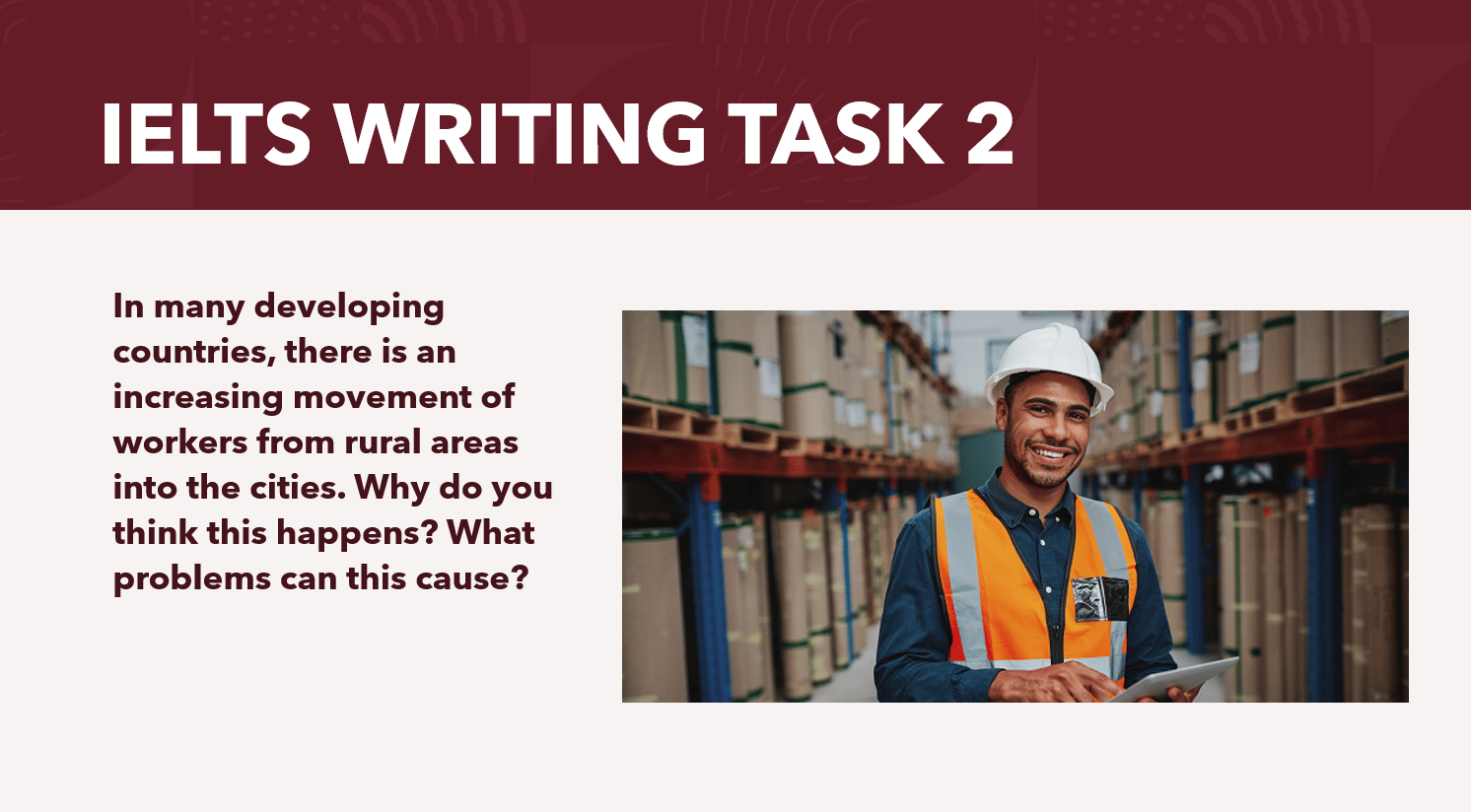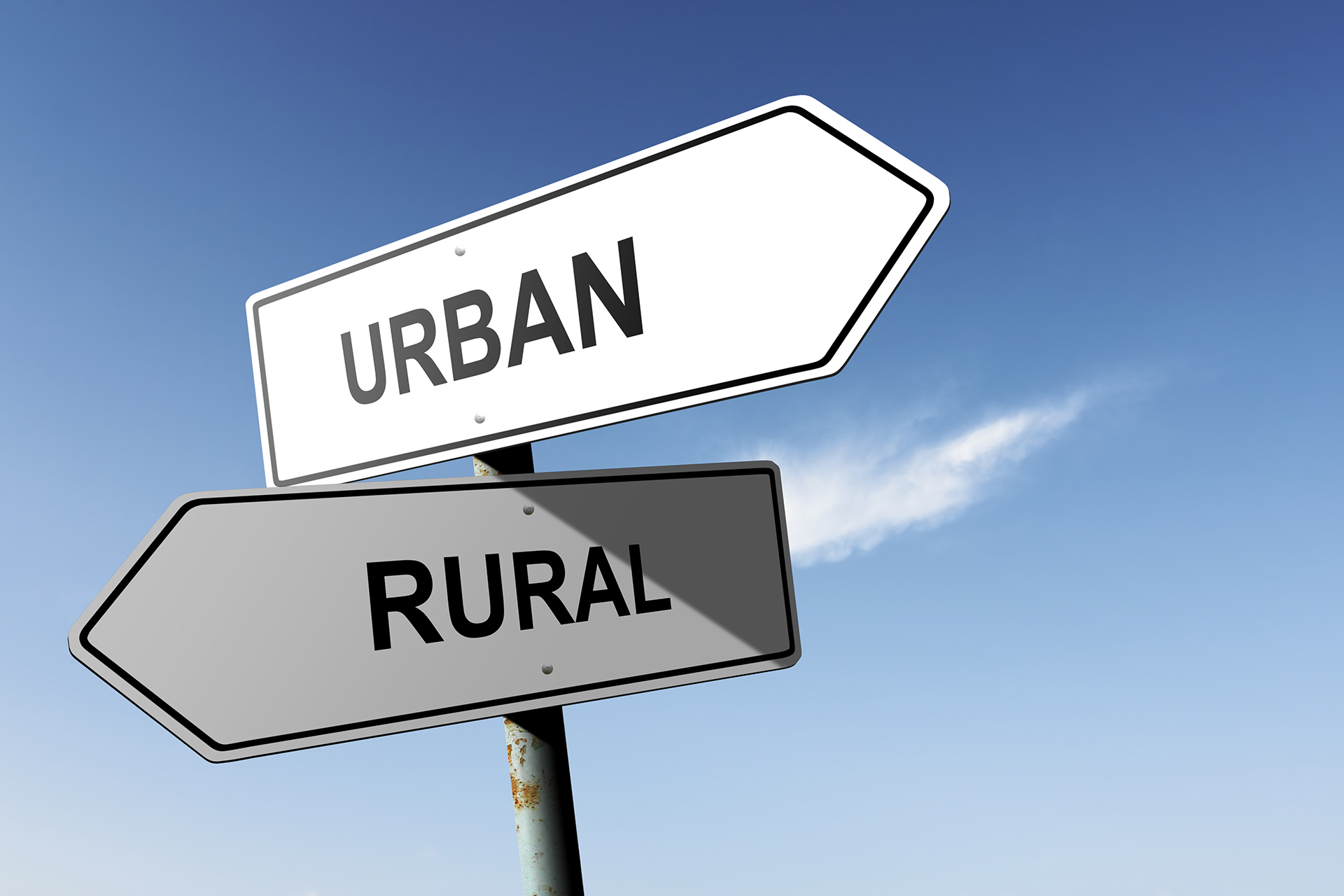Xin chào các bạn, Hà English rất hân hạnh được chia sẻ một bài mẫu IELTS Writing Task 2 với chủ đề về công việc. Câu hỏi chúng ta sẽ bàn luận trong bài viết này là: “In many developing countries, there is an increasing movement of workers from rural areas into the cities. Why do you think this happens? What problems can this cause?”
Trong nhiều quốc gia đang phát triển, chúng ta có thể thấy một sự gia tăng đáng kể trong việc di chuyển của người lao động từ vùng nông thôn vào các thành phố lớn. Chúng ta sẽ bắt đầu bài viết bằng việc thảo luận về lý do tại sao điều này xảy ra và sau đó đưa ra những vấn đề có thể phát sinh từ sự thay đổi này. Hãy cùng Hà English khám phá bài viết này và tìm hiểu về lý do khiến người lao động từ vùng nông thôn chuyển đến thành phố cũng như những vấn đề tiềm ẩn trong quá trình này.

Mục lục
Đề bài:
In many developing countries, there is an increasing movement of workers from rural areas into the cities. Why do you think this happens? What problems can this cause?
Các bước làm bài IELTS Writing Task 2 dành cho đề bài trên
Step 1: Understand our Task
Our task is to explain the reasons why workers in many developing countries are migrating from rural areas to urban cities and discuss the problems that may arise as a result of this movement.
Bước 1: Hiểu nhiệm vụ của chúng ta
Nhiệm vụ của chúng ta là giải thích các lý do tại sao người lao động ở nhiều nước đang phát triển di cư từ vùng nông thôn đến thành phố và thảo luận về những vấn đề có thể phát sinh do sự di chuyển này.
Step 2: Decide our Position
In this essay, we will examine the primary reasons for rural-to-urban migration in developing countries and the potential problems associated with this trend.
Bước 2: Xác định quan điểm của chúng ta
Trong bài luận này, chúng tôi sẽ xem xét những lý do chính gây ra sự di cư từ vùng nông thôn đến thành phố trong các nước đang phát triển và những vấn đề tiềm ẩn liên quan đến xu hướng này.
Step 3: Extend our Answer
Reasons for Rural-to-Urban Migration:
- Economic Opportunities: Urban areas typically offer more job opportunities and higher wages compared to rural regions. People migrate to cities in search of better employment and income prospects.
- Infrastructure and Services: Cities often provide improved infrastructure, including better healthcare, education, and transportation, making urban life more appealing.
- Education: Access to quality education in urban centers is a significant pull factor for families, as it offers better prospects for their children’s future.
- Escape from Poverty: Many individuals from rural areas migrate to escape poverty and seek a better standard of living in the cities.
- Industrialization and Urbanization: The growth of industries and urbanization in cities creates demands for labor, attracting rural migrants.
Problems of Rural-to-Urban Migration:
- Overcrowding: As people flock to urban areas, overcrowding becomes a severe issue, putting pressure on housing, infrastructure, and public services.
- Unemployment and Underemployment: The influx of rural migrants can lead to competition for jobs, resulting in unemployment or underemployment for some.
- Housing Shortages: Rapid urbanization often leads to housing shortages, forcing many to live in slums or informal settlements.
- Strain on Resources: Urban areas may struggle to provide essential resources such as clean water, sanitation, and healthcare to a growing population.
- Social Issues: Migration can disrupt social networks and community ties in rural areas, leading to social isolation and a sense of displacement.
Bước 3: Mở rộng câu trả lời của chúng ta
Các lý do của Sự di cư từ nông thôn đến thành phố:
- Cơ hội kinh tế: thành phố thường cung cấp nhiều cơ hội làm việc hơn và mức lương cao hơn so với vùng nông thôn. Người dân di cư đến thành phố để tìm kiếm cơ hội việc làm và thu nhập tốt hơn.
- Hạ tầng và dịch vụ: thành phố thường cung cấp cơ sở hạ tầng cải thiện, bao gồm chăm sóc sức khỏe, giáo dục và giao thông vận tải tốt hơn, làm cho cuộc sống ở thành thị hấp dẫn hơn.
- Giáo dục: việc truy cập giáo dục chất lượng tại các trung tâm thành thị là một yếu tố quan trọng khiến cho nhiều gia đình quyết định di cư, bởi nó mang lại triển vọng tốt hơn cho tương lai của con cái.
- Trốn thoát khỏi nghèo đói: nhiều người từ vùng nông thôn di cư để trốn thoát khỏi nghèo đói và tìm kiếm một chất lượng cuộc sống tốt hơn ở thành phố.
- Công nghiệp hóa và đô thị hóa: sự phát triển của các ngành công nghiệp và đô thị hóa trong các thành phố tạo ra nhu cầu về lao động, thu hút người di cư từ nông thôn.
Những vấn đề của sự di cư từ nông thôn đến thành phố:
- Quá tải: khi người dân đổ xô vào các khu vực thành thị, tình trạng quá tải trở thành một vấn đề nghiêm trọng, đặt áp lực lên nhà ở, hạ tầng và dịch vụ công cộng.
- Thất nghiệp và thất nghiệp bán thời gian: sự xâm nhập của người di cư từ nông thôn có thể dẫn đến cạnh tranh việc làm, dẫn đến thất nghiệp hoặc thất nghiệp bán thời gian cho một số người.
- Thiếu nhà ở: sự đô thị hóa nhanh chóng thường dẫn đến thiếu nhà ở, buộc nhiều người sống trong khu nhà ổ chuột hoặc những nơi cư trú không chính thống.
- Áp lực lên tài nguyên: các khu vực thành thị có thể gặp khó khăn trong việc cung cấp tài nguyên cần thiết như nước sạch, vệ sinh và chăm sóc sức khỏe cho dân số đang tăng lên.
- Vấn đề xã hội: sự di cư có thể gây đứt đoạn các mạng lưới xã hội và mối quan hệ cộng đồng ở vùng nông thôn, dẫn đến cô lập xã hội và cảm giác không thuộc về.

Sample Essay
Introduction
The movement of workers from rural areas to urban cities in developing countries has become a prevalent trend. This essay explores the underlying reasons driving this migration and highlights the potential challenges and problems associated with the increasing urbanization.
Body Paragraph 1 (Reasons for Migration)
One of the primary motivations for rural-to-urban migration is the pursuit of economic opportunities. Urban areas offer a higher concentration of jobs, often with more competitive wages than their rural counterparts. The allure of better employment and income prospects acts as a powerful incentive for individuals and families. Moreover, cities tend to boast superior infrastructure and services, including healthcare, education, and transportation, creating a more attractive living environment. Access to quality education is another driving factor, as urban schools are often perceived as offering a path to a brighter future for children. For many, migrating to the city is a means to escape poverty and enhance their standard of living. The growth of industries and urbanization in cities further boosts the demand for labor, drawing in rural migrants seeking better economic prospects.
Body Paragraph 2 (Problems of Migration)
While rural-to-urban migration can bring about numerous benefits, it also poses significant challenges. Overcrowding is a notable issue as the influx of migrants strains the available resources in urban areas. This results in increased pressure on housing, infrastructure, and public services. Additionally, competition for jobs can lead to unemployment or underemployment among migrants, exacerbating the struggle to make ends meet. Housing shortages are a common consequence of rapid urbanization, forcing many to reside in slums or informal settlements. Urban areas may find it challenging to provide essential resources like clean water, sanitation, and healthcare to a rapidly growing population, leading to disparities in access. Social issues such as the disruption of social networks and community ties in rural areas can result in social isolation and a sense of displacement among migrants.
Conclusion
In conclusion, rural-to-urban migration in developing countries is primarily driven by economic opportunities, improved infrastructure, and access to education. However, it gives rise to challenges such as overcrowding, unemployment, housing shortages, resource strain, and social issues. Addressing these problems while harnessing the advantages of urbanization is crucial for sustainable development in urban areas.
Vietnamese Translation of Key Vocabulary and Phrases
- Economic Opportunities: Cơ hội kinh tế
- Infrastructure and Services: Cơ sở hạ tầng và dịch vụ
- Education: Giáo dục
- Escape from Poverty: Trốn thoát khỏi nghèo đói
- Industrialization and Urbanization: Công nghiệp hóa và đô thị hóa
- Overcrowding: Quá tải dân số
- Unemployment and Underemployment: Thất nghiệp và việc làm không đủ
- Housing Shortages: Thiếu nhà ở
- Strain on Resources: Áp lực lên tài nguyên
- Social Issues: Vấn đề xã hội
- Displacement: Làm mất nơi ở, đào tạo
Xem thêm các bài viết IELTS Writing Task 2 khác TẠI ĐÂY
Tổng kết
Qua bài viết này, chúng ta đã tổng hợp lý do khiến người lao động từ vùng nông thôn di chuyển vào thành phố và những vấn đề có thể phát sinh từ sự gia tăng này. Chúng ta đã nhấn mạnh tầm quan trọng của việc quản lý kỹ lưỡng để giảm thiểu các vấn đề xã hội và kinh tế mà có thể xuất hiện trong quá trình này. Hà English hy vọng rằng bài mẫu này đã giúp bạn nắm vững cách viết bài luận IELTS Writing Task 2 với câu hỏi Agree/Disagree và sẽ giúp bạn tự tin hơn trong kỳ thi IELTS của mình.
Nếu bạn đang tìm kiếm một trung tâm Anh ngữ uy tín và chất lượng, Hà English là một sự lựa chọn tuyệt vời. Với hơn 10 năm kinh nghiệm trong lĩnh vực giảng dạy tiếng Anh, trung tâm đã đạt được uy tín cao trong việc đào tạo học viên về ngoại ngữ.

Hà English tự hào là một môi trường học tập chuyên nghiệp và thân thiện, với đội ngũ giáo viên có trình độ cao và giàu kinh nghiệm. Những giảng viên tại trung tâm không chỉ sở hữu kiến thức chuyên môn vững vàng mà còn có khả năng tạo động lực và sự hứng thú trong quá trình học tập của học viên.
Dạy từ tâm – nâng tầm tri thức
Nhận tư vấn lộ trình ngay!
